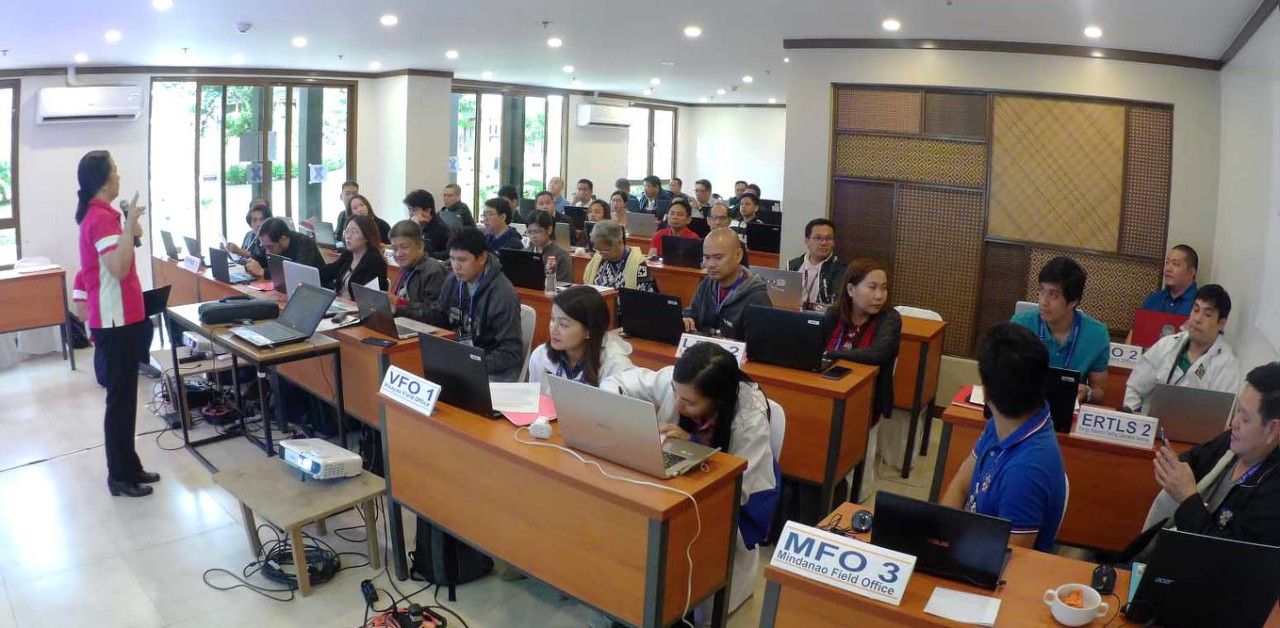
FOR A RESILIENT ENERGY SECTOR: Participants listen intently as the Rapid Earthquake Damage Assessment System (REDAS) trainor discussed the mechanics for the software's proper usage on the first day for the REDAS Training conducted by PHIVOLCS, PAGASA and DENR-MGB at Kasa Luntian in Tagaytay City from 2 to 7 September 2019.
The REDAS software is being used by LGUs and their community planners for disaster risk assessments, and more recently, by government agencies involved in disaster resiliency operations.
TAGAYTAY CITY – Key Department of Energy (DOE) personnel participated in the training of the Hazard, Impact Assessment and Exposure Database Development through the use of Rapid Earthquake Damage Assessment System (REDAS) at Kasa Luntian on 2 to 7 September.
The training was done in part of the DOE's disaster-preparedness operations with the REDAS serving as a key element in quickly assessing possible hazards brought about by earthquakes and other natural calamities that the country is prone to.
"We must give due importance to disaster preparation because of the uncertainty of when and where it may strike. The DOE is focused on its task of ensuring that energy services go on, even in times of natural or man-made calamities. That is why we are capacitating our public servants, so that they may perform their duties even at times of disasters, in order to better help our kababayans", said Secretary Alfonso G. Cusi.
REDAS is a software solely designed and developed by the Department of Science and Technology- Philippine Institute of Volcanology and Seismology (DOST-PHIVOLCS), with a three-tier objective: 1) to provide real-time simulated earthquake hazard information; 2) to serve as a tool for planning and development of land use, by local government units in order to alleviate potential earthquake damage; and 3) to integrate a cross-platform information in order to assess flood and severe wind impact damage, as well as crop damage assessment thereby expanding the use of REDAS to determine the effects of other natural calamities.
The event was done in coordination with the DOST-PHIVOLCS as the lead agency for REDAS training. PHIVOLCS Deputy Director Dr. Bartolome C. Bautista lead the team of trainers composed of scientists and experts from PHIVOLCS, the Philippine Atmospheric, Geophysical and Astronomical Services Administration (PAGASA), and the Department of Environment and Natural Resources - Mines and Geosciences Bureau (DENR-MGB).
Representatives from the DOE's line bureaus and services were chosen based on their capacity in the Department's disaster response operations. A total of 42 participants from the DOE were in attendance for the stringent, compressed, 56-hour training that involved among others, basic REDAS software operations and programming, disaster-related damage assessment and a test fieldwork, where trainees were taught on mapping and evaluating structures that may be subject to damage in the event of an earthquake. Representatives from the National Electrification Agency (NEA) also participated in the event, with the aim of helping electric cooperatives strengthen their respective disaster and risk mitigation measures.
###
